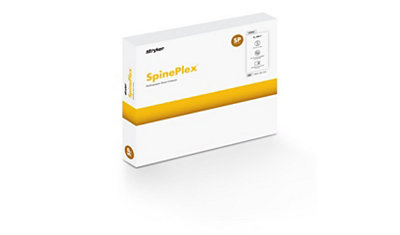SpinePlex® radiopaque bone cement

SpinePlex® radiopaque bone cement contains the same polymethyl methacrylate (PMMA) and is manufactured using the same proprietary process as Simplex P cement.
SpinePlex® radiopaque bone cement is indicated for the fixation of pathological fractures of the vertebral body using vertebroplasty or kyphoplasty procedures. Painful vertebral compression fractures may result from osteoporosis, benign lesions (hemangioma), and malignant lesions (metastatic cancers, myeloma).
Features1
- Working time of 10-12 minutes2
- Set time of 8.2 minutes (in vivo) at 37ºC
- 30% barium sulfate concentration
Reference
- Bone Cements Clinical Evaluation Report (12 December 2019).
- Independent lab results from Fluid Dynamics Inc. commissioned by Stryker July 2009. Testing conducted at 20-21° C (68-70° F).
Disclaimer
Bone cement: serious adverse events, some with fatal outcome, associated with the use of bone cements for vertebroplasty, kyphoplasty and sacroplasty include myocardial infarction, cardiac arrest, cerebrovascular accident, pulmonary embolism and cardiac embolism. Although it is rare, some adverse events have been known to occur beyond a year or more postoperatively. Additional risks exist with the use of bone cement. Please see the IFU for a complete list of potential risks.
A surgeon must always rely on his or her own professional clinical judgment when deciding whether to use a particular product when treating a particular patient. Stryker does not dispense medical advice and recommends that surgeons be trained in the use of any particular product before using it in surgery. The information presented is intended to demonstrate the breadth of Stryker product offerings. A surgeon must always refer to the package insert, product label and/or instructions for use before using any Stryker product. The products depicted are CE marked in accordance with applicable EU Regulations and Directives. Products may not be available in all markets because product availability is subject to the regulatory and/or medical practices in individual markets. Please contact your Stryker representative if you have questions about the availability of Stryker products in your area
2020-27613
